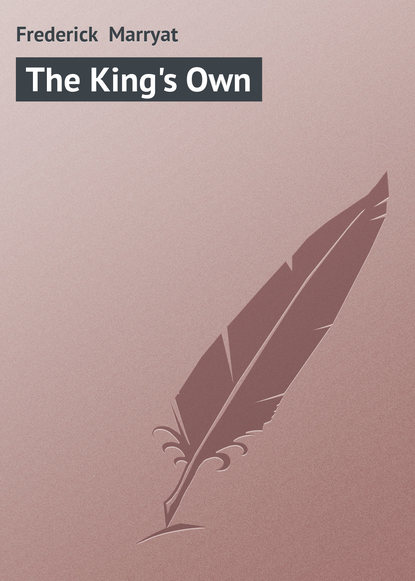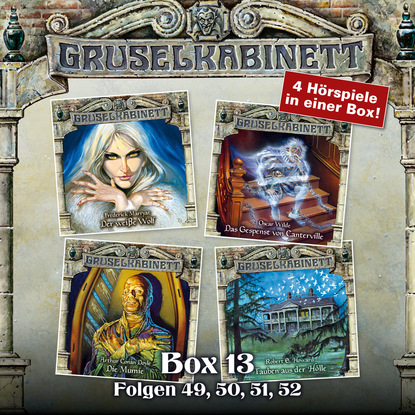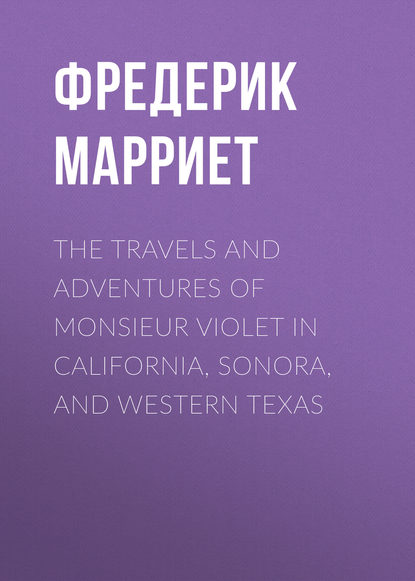 Полная версия
Полная версияПолная версия:
Фредерик Марриет Diary in America, Series Two
- + Увеличить шрифт
- - Уменьшить шрифт

Frederick Marryat
Diary in America, Series Two
Volume One—Chapter One
TravellingI believe that the remarks of a traveller in any country not his own, let his work be ever so trifling or badly written, will point out some peculiarity which will have escaped the notice of those who were born and reside in that country, unless they happen to be natives of that portion of it in which the circumstance alluded to was observed. It is a fact that no one knows his own country; from assuetude and, perhaps, from the feelings of regard which we naturally have for our native land, we pass over what nevertheless does not escape the eye of a foreigner. Indeed, from the consciousness that we can always see such and such objects of interest whenever we please, we very often procrastinate until we never see them at all. I knew an old gentleman who having always resided in London, every year declared his intention of seeing the Tower of London with its Curiosities. He renewed this declaration every year, put it off until the next, and has since left the world without having ever put his intention into execution.
That the Americans would cavil at portions of the first part of my work, I was fully convinced, and as there are many observations quite new to most of them, they are by them considered to be false; but the United States, as I have before observed, comprehend an immense extent of territory, with a population running from a state of refinement down to one of positive barbarism; and although the Americans travel much, they travel the well beaten paths, in which that which is peculiar is not so likely to meet the eye or even the ear. It does not, therefore, follow that because what I remark is new to many of them, that therefore it is false. The inhabitants of the cities in the United States, (and it is those who principally visit this country), know as little of what is passing in Arkansas and Alabama as a cockney does of the manners and customs of Guernsey, Jersey, and the Isle of Man.
The other day, one American lady observed that, “it was too bad of Captain Marryat to assert that ladies in America carried pigtail in their work-boxes to present to the gentlemen;” adding, “I never heard or saw such a thing in all my life.” Very possible; and had I stated that at New York, Philadelphia, Boston, or Charleston, such was the practice, she then might have been justifiably indignant. But I have been very particular in my localities, both in justice to myself and the Americans, and if they will be content to confine their animadversions to the observations upon the State to which they belong, or my general observations upon the country and government, I shall then be content; if, on the contrary, their natural vanity will not allow any remarks to be made upon the peculiarities of one portion of society without considering them as a reflection upon the whole of the Union, all I can say is that they must, and will be annoyed.
The answer made to the lady who was “wrathy” about the pigtail was, “Captain M has stated it to be a custom in one State. Have you ever been in that State?”
“No, I have not,” replied the lady, “but I have never heard of it.” So then, on a vast continent, extending almost from the Poles to the Equator, because one individual, one mere mite of creation among the millions (who are but a fraction of the population which the country will support), has not heard of what passes thousands of miles from her abode, therefore it cannot be true! Instead of cavilling, let the American read, mark, learn, and inwardly digest all that I have already said, and all that I intend to say in these volumes; and although the work was not written for them, but for my own countrymen, they will find that I have done them friendly service.
There is much comprehended in the simple word “travelling” which heads this chapter, and it is by no means an unimportant subject, as the degree of civilisation of a country, and many important peculiarities, bearing strongly upon the state of society, are to be gathered from the high road, and the variety of entertainment for man and horse; and I think that my remarks on this subject will throw as much light upon American society as will be found in any chapter which I have written.
In a country abounding as America does with rivers and railroads, and where locomotion by steam, wherever it can be applied, supersedes every other means of conveyance, it is not to be expected that the roads will be remarkably good; they are, however, in consequence of the excellent arrangements of the townships and counties, in the Eastern States, as good, and much better, than could be expected. The great objection to them is that they are not levelled, but follow the undulations of the country, so that you have a variety of short, steep ascents and descents which are very trying to the carriage-springs and very fatiguing to the traveller. Of course in a new country you must expect to fall in with the delightful varieties of Corduroy, etcetera, but wherever the country is settled, and the population sufficient to pay the expense, the roads in America may be said to be as good as under circumstances could possibly be expected. There are one or two roads, I believe, not more, which are government roads; but, in general, the expense of the roads is defrayed by the States.
But, before I enter into any remarks upon the various modes of travelling in America, it may be as well to say a few words upon the horses, which are remarkably good in the United States: they appear to be more hardy, and have much better hoofs, than ours in England; throwing a shoe therefore is not of the same consequence as it is with us, for a horse will go twenty miles afterwards with little injury. In Virginia and Kentucky the horses are almost all thorough-bred, and from the best English stock.—The distances run in racing are much longer than ours, and speed without bottom is useless.
The Americans are very fond of fast trotting horses; I do not refer to rackers, as they term horses that trot before and gallop behind, but fair trotters, and they certainly have a description of horse that we could not easily match in England. At New York, the Third Avenue, as they term it, is the general rendezvous, I once went out there mounted upon Paul Pry, who was once considered the fastest horse in America; at his full speed he performed a mile in two minutes and thirty seconds, equal to twenty-four miles per hour. He took me at this devil of a pace as far as Hell Gate; not wishing “to intrude,” I pulled up there, and went home again. A pair of horses in harness were pointed out to me who could perform the mile in two minutes fifty seconds. They use here light four-wheeled vehicles which they call wagons, with a seat in the front for two persons and room for your luggage behind; and in these wagons, with a pair of horses, they think nothing of trotting them seventy or eighty miles in a day, at the speed of twelve miles an hour; I have seen the horses come in, and they did not appear to suffer from the fatigue. You seldom see a horse bent forward, but they are all daisy cutters.
The gentlemen of New York give very high prices for fast horses; 1,000 dollars is not by any means an uncommon price. In a country where time is every thing, they put a proportionate value upon speed. Paul Pry is a tall grey horse (now thirteen years old); to look at, he would not fetch 10 pounds,—the English omnibuses would refuse him.
Talking about omnibuses, those of New York, and the other cities in America, are as good and as well regulated as those of Paris; the larger ones have four horses. Not only their omnibuses, but their hackney coaches are very superior to those in London; the latter are as clean as private carriages; and with the former there is no swearing, no dislocating the arms of poor females, hauling them from one omnibus to the other,—but civility without servility.
The American stage-coaches are such as experience has found out to be most suitable to the American roads, and you have not ridden in them five miles before you long for the delightful springing of four horses upon the level roads of England. They are something between an English stage1 and a French diligence, built with all the panels open, on account of the excessive heat of the summer months. In wet weather these panels are covered with leather aprons, which are fixed on with battons, a very insufficient protection in the winter, as the wind blows through the intermediate spaces, whistling into your ears, and rendering it more piercing than if all was open. Moreover, they are no protection against the rain or snow, both of which find their way in to you. The coach has three seats, to receive nine passengers; those on the middle seat leaning back upon a strong and broad leather brace, which runs across. This is very disagreeable, as the centre passengers, when the panels are closed, deprive the others of the light and air from the windows. But the most disagreeable feeling arises from the body of the coach not being upon springs, but hung upon leather braces running under it and supporting it on each side; and when the roads are bad, or you ascend or rapidly descend the pitches (as they term short hills) the motion is very similar to that of being tossed in a blanket, often throwing you up to the top of the coach, so as to flatten your hat—if not your head.
The drivers are very skilful, although they are generally young men—indeed often mere boys—for they soon better themselves as they advance in life. Very often they drive six in hand; and if you are upset, it is generally more the fault of the road than of the driver. I was upset twice in one half hour when I was travelling in the winter time; but the snow was very deep at the time, and no one thinks anything of an upset in America. More serious accidents do, however, sometimes happen. When I was in New Hampshire, a neglected bridge broke down, and precipitated coach, horses, and passengers into a torrent which flowed into the Connecticut river. Some of the passengers were drowned. Those who were saved, sued the township and recovered damages; but these mischances must be expected in a new country. The great annoyance of these public conveyances is, that neither the proprietor or driver consider themselves the servants of the public; a stage-coach is a speculation by which as much money is to be made as possible by the proprietors; and as the driver never expects or demands a fee from the passengers, they or their comforts are no concern of his. The proprietors do not consider that they are bound to keep faith with the public, nor do they care about any complaints.
The stages which run from Cincinnati to the eastward are very much interfered with when the Ohio river is full of water, as the travellers prefer the steam-boats; but the very moment that the water is so low on the Ohio that the steam-boats cannot ascend the river up to Wheeling, double the price is demanded by the proprietors of the coaches. They are quite regardless as to the opinion or good-will of the public; they do not care for either, all they want is their money, and they are perfectly indifferent whether you break your neck or not. The great evil arising from this state of hostility, as you may almost call it, is the disregard of life which renders travelling so dangerous in America. You are completely at the mercy of the drivers, who are, generally speaking, very good-tempered, but sometimes quite the contrary; and I have often been amused with the scenes which have taken place between them and the passengers. As for myself, when the weather permitted it, I invariably went outside, which the Americans seldom do, and was always very good friends with the drivers. They are full of local information, and often very amusing. There is, however, a great difference in the behaviour of the drivers of the mails, and coaches which are timed by the post-office, and others which are not. If beyond his time, the driver is mulcted by the proprietors; and when dollars are in the question, there is an end to all urbanity and civility.
A gentleman of my acquaintance was in a mail which was behind time, and the driver was proceeding at such a furious pace that one jerk threw a lady to the top of the coach, and the teeth of her comb entering her head, she fainted with pain. The passengers called out to the driver to stop. “What for?” “That last jerk has struck the lady, and she has fainted.” “Oh, that’s all! Well, I reckon I’ll give her another jerk, which will bring her to again.” Strange to say, he prophesied right; the next jerk was very violent, and the lady recovered her senses.
Mr E, an employé of the American government, was travelling in the state of Indiana—the passengers had slept at an inn, and the coach was ready at the door, but Mr E had not quite finished his toilet; the driver dispatched the bar-keeper for him, and Mr E sent word he would be down immediately.
“What is he about?” said the driver impatiently to the bar-keeper when he came down again.
“Cleaning his teeth.”
“Cleaning his teeth!” roared the driver, indignantly; “by the —,” and away went the horses at a gallop, leaving Mr E behind.
The other passengers remonstrated, but without avail; they told him that Mr E was charged with government despatches—he didn’t care; at last, one of them offered him a dollar if he would go back. They had proceeded more than a mile before the offer was made; the man immediately wheeled his horses round, and returned to the inn.
The Rev. Mr Reid gives an anecdote very characteristic of American stage-coach travelling, and proving how little the convenience of the public is cared for.
“When we stopped at Lowell to change horses, a female wished to secure a place onward. We were already, as the phrase is, more than full; we had nine persons, and two children, which are made to go for nothing, except in the way-bill. Our saucy driver opened the door, and addressing two men, who, with us, would have been outside passengers—‘now, I say, I want one of you to ride with me, and let a lady have your seat.’ The men felt they were addressed by a superior, but kept their places. ‘Come, I say,’ he continued, ‘you shall have a good buffalo and umbrel, and nothing will hurt you.’ Still they kept their places, and refused him. His lordship was offended, and ready to lay hands on one of them; but, checking himself, exclaimed, ‘Well, if I can’t get you out, hang it if I’ll take you on till one of you gets out.’ And there we stood for some time; and he gained his point at last, and in civiller terms, by persuading the persons on the middle seat to receive the lady; so that we had now twelve inside.”
I once myself was in a stage-coach, and found that the window glasses had been taken out; I mentioned this to the driver, as it rained in very fast—“Well, now,” replied he, “I reckon you’d better ax the proprietors; my business is to drive the coach.” And that was all the comfort I could procure. As for speaking to them about stopping, or driving slow, it is considered as an unwarrantable interference.
I recollect an Englishman at New York telling me, that when in the Eastern States, he had expressed a wish to go a little faster—“Oh,” said the driver, “you do, do you; well, wait a moment, and I’ll go faster than you like.” The fellow drove very slow where the road was good; but as soon as he came to a bad piece, he put his horses to the gallop, and, as my friend said, they were so tossed and tumbled about, that they hardly knew where they were. “Is that fast enough, Mister,” said the driver, leering in at the couch window.
As for stopping, they will stop to talk to any one on the road about the price of the markets, the news, or any thing else; and the same accommodation is cheerfully given to any passenger who has any business to transact on the way. The Americans are accustomed to it, and the passengers never raise any objections. There is a spirit of accommodation, arising from their natural good temper2.
I was once in a coach when the driver pulled up, and entered a small house on the road side; after he had been there some time, as it was not an inn, I expressed my wonder what he was about. “I guess I can tell you,” said a man who was standing by the coach, and overheard me; “there’s a pretty girl in that house, and he’s doing a bit of courting, I expect.” Such was the fact: the passengers laughed, and waited for him very patiently. He remained about three-quarters of an hour, and then came out. The time was no doubt to him very short; but to us it appeared rather tedious.
Mrs Jamieson, in her last work, says: “One dark night, I remember, as the sleet and rain were falling fast, and our Extra was slowly dragged by wretched brutes of horses through what seemed to me ‘Sloughs of Despond,’ some package ill stowed on the roof, which in the American stages presents no resting-place for man or box, fell off. The driver alighted to fish it out of the mud. As there was some delay, a gentleman seated opposite to me put his head out of window to inquire the cause; to whom the driver’s voice replied, in an angry tone, ‘I say, you mister, don’t you sit jabbering there; but lend a hand to heave these things aboard!’ To my surprise, the gentleman did not appear struck by the insolence of this summons, but immediately jumped out and rendered his assistance. This is merely the manner of the people. The driver intended no insolence, nor was it taken as such; and my fellow-travellers could not help laughing at my surprise.”
I have mentioned these little anecdotes, as they may amuse the reader; but it must be understood that, generally speaking, the drivers are very good-natured and obliging, and the passengers very accommodating to each other, and submitting with a good grace to what cannot be ameliorated.
Volume One—Chapter Two
TravellingIn making my observations upon the rail-road and steam-boat travelling in the United States, I shall point out some facts with which the reader must be made acquainted. The Americans are a restless, locomotive people: whether for business or pleasure, they are ever on the move in their own country, and they move in masses. There is but one conveyance, it may be said, for every class of people, the coach, rail-road, or steam-boat, as well as most of the hotels, being open to all; the consequence is that the society is very much mixed—the millionaire, the well-educated woman of the highest rank, the senator, the member of Congress, the farmer, the emigrant, the swindler, and the pick-pocket, are all liable to meet together in the same vehicle of conveyance. Some conventional rules were therefore necessary, and those rules have been made by public opinion—a power to which all must submit in America. The one most important, and without which it would be impossible to travel in such a gregarious way, is an universal deference and civility shewn to the women, who may in consequence travel without protection all over the United States without the least chance of annoyance or insult. This deference paid to the sex is highly creditable to the Americans; it exists from one end of the Union to the other; indeed, in the Southern and more lawless States, it is even more chivalric than in the more settled. Let a female be ever so indifferently clad, whatever her appearance may be, still it is sufficient that she is a female; she has the first accommodation, and until she has it, no man will think of himself. But this deference is not only shewn in travelling, but in every instance. An English lady told me, that wishing to be present at the inauguration of Mr Van Buren, by some mistake, she and her daughters alighted from the carriage at the wrong entrance, and in attempting to force their way through a dense crowd were nearly crushed to death. This was perceived, and the word was given—‘make room for the ladies.’ The whole crowd, as if by one simultaneous effort, compressed itself to the right and left, locking themselves together to meet the enormous pressure, and made a wide lane, through which they passed with ease and comfort. “It reminded me of the Israelites passing through the Red Sea with the wall of waters on each side of them,” observed the lady. “In any other country we must have been crushed to death.”
When I was on board one of the steam-boats, an American asked one of the ladies to what she would like to be helped. She replied, to some turkey, which was within reach, and off of which a passenger had just cut the wing and transferred it to his own plate. The American who had received the lady’s wishes, immediately pounced with his fork upon the wing of the turkey and carried it off to the young lady’s plate; the only explanation given, “a lady, Sir!” was immediately admitted as sufficient.
The authority of the captain of a steam-boat is never disputed; if it were, the offender would be landed on the beach. I was on board of a steam-boat when, at tea time, a young man sat down with his hat on.
“You are in the company of ladies, sir,” observed the captain very civilly, “and I must request you to take your hat off.”
“Are you the captain of the boat?” observed the young man, in a sulky tone.
“Yes, sir, I am.”
“Well, then, I suppose I must,” growled the passenger, as he obeyed.
But if the stewards, who are men of colour, were to attempt to enforce the order, they would meet with such a rebuff as I have myself heard given.
“If it’s the captain’s orders, let the captain come and give them. I’m not going to obey a Nigger like you.”
Perhaps it is owing to this deference to the sex that you will observe that the Americans almost invariably put on their best clothes when they travel; such is the case whatever may be the cause; and the ladies in America, travelling or not, are always well, if not expensively dressed. They don’t all swap bonnets as the two young ladies did in the stage-coach in Vermont.
But, notwithstanding the decorum so well preserved as I have mentioned, there are some annoyances to be met with from gregarious travelling. One is, that occasionally a family of interesting young citizens who are suffering from the whooping-cough, small-pox, or any other complaint, are brought on board, in consequence of the medical gentlemen having recommended change of air. Of course the other children, or even adults, may take the infection, but they are not refused admittance upon such trifling grounds; the profits of the steam boat must not be interfered with.
Of all travelling, I think that by railroad the most intriguing, especially in America. After a certain time the constant coughing of the locomotive, the dazzling of the vision from the rapidity with which objects are passed, the sparks and ashes which fly in your face and on your clothes become very annoying; your only consolation is the speed with which you are passing over the ground.
The railroads in America are not so well made as in England, and are therefore more dangerous; but it must be remembered that at present nothing is made in America but to last a certain time; they go to the exact expense considered necessary and no further, they know that in twenty years they will be better able to spend twenty dollars than one now. The great object is to obtain quick returns for the outlay, and, except in few instances, durability or permanency is not thought of. One great cause of disasters is, that the railroads are not fenced on the sides, so as to keep the cattle off them, and it appears as if the cattle who range the woods are very partial to take their naps on the roads, probably from their being drier than the other portions of the soil. It is impossible to say how many cows have been cut into atoms by the trains in America, but the frequent accidents arising from these causes has occasioned the Americans to invent a sort of shovel, attached to the front of the locomotive, which takes up a cow, tossing her off right or left. At every fifteen miles of the rail-roads there are refreshment rooms; the cars stop, all the doors are thrown open, and out rush the passengers like boys out of school, and crowd round the tables to solace themselves with pies, patties, cakes, hard-boiled eggs, ham, custards, and a variety of railroad luxuries, too numerous to mention. The bell rings for departure, in they all hurry with their hands and mouths full, and off they go again, until the next stopping place induces them to relieve the monotony of the journey by masticating without being hungry.




